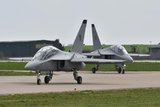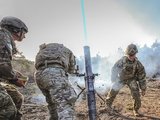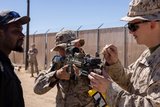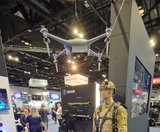QinetiQ commences new RAF training
QinetiQ has started delivering a new training programme for students of the Royal Air Force (RAF) aimed at improving operators’ confidence and lessening the chance of ‘freezing’ during live air missions.
The training course, known as Phase Two Weapon Systems Operators (WSOp), creates a detailed simulated environment for commanding weapons release when flying air combat and airborne EW missions.
It provides a realistic experience using onboard radar and sensors to make threat predictions and aid decision making in live air missions.
WSOp trainees use a high fidelity real-time simulation of an entire Integrated Air Defence System (IADS). The system accurately simulates a wide range of scenarios and variables that pilots encounter during air operations. This includes a new ability to detect radar jamming and understanding whether a radar system is already tracking its maximum number of targets. It also uses a new method of accurately simulating how different weapons respond at the point of release, taking into account the impact of a huge number of variables including weapon thrust, drag, weight, height and atmospheric circumstances – creating precise representations of what happens when operators pull the trigger.
It also allows the trainees to appreciate the different factors than can affect how a target appears in front of them, which is an essential information for making ‘beyond reasonable doubt’ decisions on whether to command the launch of a missile.
Experienced ex-military pilots deliver both simulation training and classroom learning. The students have to undergo weekly exams to demonstrate what they have learned.
Roland Pemberton, principal training consultant, QinetiQ Training said: ‘We’ve designed the course to give participants the opportunity to gain skills in situational awareness and develop a sense of how to prioritise immediate threats.
'Students who complete the course successfully will develop an instinct for dealing with life and death scenarios where time is always of the essence and the opportunity cost of indecision could prove fatal. The use of the simulation software has been a breath of fresh air for the students and gives them a chance to get out of the classroom to showcase their knowledge and put their training into action.’
More from Training
-
![Cubic tailors mortar simulator for the US Army]()
Cubic tailors mortar simulator for the US Army
The company’s mortar trainer received improvements based on soldier’s feedback.
-
![Saab expands footprint in the US]()
Saab expands footprint in the US
The company will operate in two new locations in the coming years to better support US services.
-
![How terrain management capabilities can improve military training]()
How terrain management capabilities can improve military training
This type of tool provides more realistic training easing the incorporation of new scenarios that accurately represent the threats of the battlefield.
-
![I/ITSEC 2024: Australian Army approaches second phase of countermining training]()
I/ITSEC 2024: Australian Army approaches second phase of countermining training
The Engineering Corps has been conducting individual instruction using FLAIM Systems’ Sweeper and should start collective deployments in 2025.
-
![I/ITSEC 2024: Zeiss introduces Velvet 4K SIM projector for night flight simulation]()
I/ITSEC 2024: Zeiss introduces Velvet 4K SIM projector for night flight simulation
The next-generation platform is motion-compatible and can be used in OTW and NVG applications.
-
![I/ITSEC 2024: Saab introduces UAV live training capability]()
I/ITSEC 2024: Saab introduces UAV live training capability
The system can be used to prepare soldiers for both drone offensive operations and CUAS missions.
























